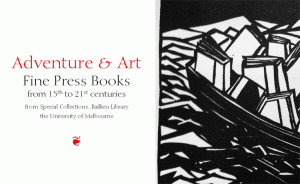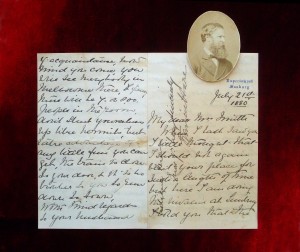Life Under A Shadow: John Harry Grainger, architect and civil engineer
John Grainger, Grainger Museum Collection
The Grainger Museum at the University of Melbourne is currently presenting an exhibition that investigates the many achievements of John Harry Grainger, the gifted architect and engineer whose life was largely overshadowed by that of his son, composer and performer, Percy Aldridge Grainger.
Trained in London, J.H. Grainger travelled to Australia in 1877 to take up the humble position of a draftsman with the South Australian Public Works Department. An ambitious young man, Grainger entered into competitions for private commissions with great success. At 25 he won commissions for two bridges: the intricately engineered swing bridge at Sale in Gippsland; and most significantly, Princes Bridge over the Yarra River in Melbourne. The Princes Bridge design was an enormous achievement – a task that would have challenged a practitioner twice his age. It became a major landmark then, as it is now.
Notable structures that were the result of Grainger’s creative vision were the well-loved ‘Georges’ building in Collins Street, Melbourne and the State Savings Bank and Masonic Hall also in Melbourne (the latter two no longer exist). The impressive French Renaissance Revival style public library and municipal offices in Auckland, as well as the Fremantle Town Hall in Perth, are fine examples of Grainger’s public building commissions.
This exhibition includes a selection of artefacts from the Grainger Museum Collection which show aspects of Grainger’s life, as well as photographs, architectural and engineering drawings, and artworks. The displays include correspondence and ephemera relating to his relationship with his son Percy. It will give Museum visitors a more detailed understanding of Percy Grainger’s early family life and the often forgotten influences of his father.
Grainger Museum opening hours are Tuesday to Friday and Sunday from 1.00pm to 4.30pm, and Mondays during semester from 12noon to 3.30pm when there is a performance in Melba Hall.





